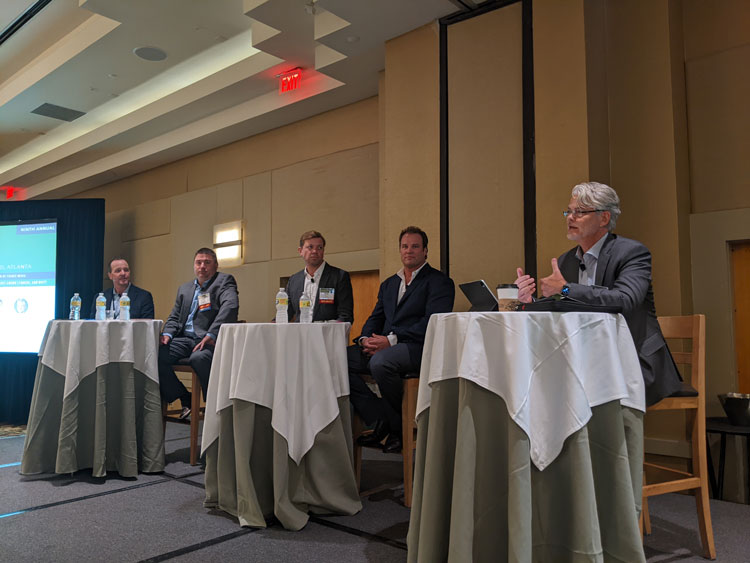With ground-up construction increasingly fraught with risk, savvy developers leverage data and consumer research to their advantage. By Jeff Shaw Developers and investors already know that a market report is one of the most crucial pieces of the “go” versus “no-go” decision on whether to build a seniors housing community. But those studies — which factor in everything from demographics and cost of living to competition in the marketplace to the difficulty of navigating the entitlement process — have become even more important in recent years as new headwinds buffet …
From The Magazine
From sustainable building features to family-friendly dining venues to comfortable staff lounges, today’s architects provide project blueprints that both inspire and pencil out. By Jeff Shaw Seniors housing as an industry is always changing, but the pace the past few years has been especially fast. From the temporary and permanent changes during the COVID-19 pandemic to the national labor shortage hitting this sector particularly hard — all against the backdrop of a massive wave of demand coming from the baby boomers in the near future — there are plenty of …
A Port in the Storm Omega Healthcare Investors rides out recessions, regulatory sea changes and pandemics to remain one of the largest owners of senior care facilities. By Jeff Shaw Omega Healthcare Investors launched in a way that was extremely unusual at the time. Essel Bailey Jr. founded the company in 1992, but had few assets to show — $400,000 in cash and a contract to buy 37 skilled nursing facilities for $120 million. Omega was started in a manner similar to what today is known as a special purpose …
Borrowers Face Stiffening Headwinds as Interest Rates Spike While Some Lenders Hit Pause Button
By Matt Valley The seniors housing industry can’t seem to catch a break in the wake of the COVID-19 pandemic, says Aron Will of CBRE Capital Markets. While operational performance has improved the past several months due to a gradual rise in occupancy and less reliance on temporary workers, the capital markets have become increasingly difficult to navigate due to a spike in interest rates. This juxtaposition isn’t lost on Will. “The debt markets are about as choppy as we’ve seen since 2008 and 2009. The bank market has really …
As land and construction costs soar, developers find success with repositioning projects despite the risks. By Jeff Shaw Ground-up seniors housing construction is arguably more difficult now than it has ever been, forcing developers to come up with an alternative game plan to stay active. The producer price index for new building construction — a measure of the price that contractors say they would bid to build a fixed set of buildings — increased 19.8 percent year over year in June, according to the Associated General Contractors of America (AGC). …
When the going gets tough, top developers are drawn to sites where the competition is limited. By Bendix Anderson Developers are building fewer new seniors housing units today than they have in years. Rising interest rates and the high cost of land, labor and construction materials have made development more expensive than ever. A potential new seniors housing community would need income from strong, steady rents to justify these high costs. But after years of overbuilding before the coronavirus and the shock of the pandemic itself, seniors housing vacancies remain …
Advancements in artificial intelligence, mobile apps and even robots are becoming the new normal for improving seniors’ health. By Eric Taub A plaintive call from an elderly family member several years ago illustrated society’s digital divide. “The TV commercial said I should go on a website for more information,” she complained. “But I don’t know how to get on the internet.” That generation of individuals alienated by technology is now dwindling in number, gradually being replaced by aging baby boomers who, while not growing up with computers and smartphones, are …
As borrower interests change quickly in the post-COVID world, capital sources adapt to their needs. By Jeff Shaw Many factors go into a seniors housing investor or developer’s need for capital. Considerations such as occupancy at existing communities, construction costs for new buildings, interest rates, inflation and capitalization rates all play a critical role in how companies choose to invest in the sector. When those factors push the industry in one direction, causing a trend, lenders and borrowers come together to see if they can make a project work for …
The pandemic and a new White House administration lead to a changed legal and regulatory landscape, and the jury is still out on the near-term and long-term impacts. By Jeff Shaw The seniors housing industry has undergone an unprecedented amount of transformation in the last few years, and the government priorities and legal issues surrounding the sector have changed along with it. On the regulatory side, a change of White House administration in the heart of a deadly pandemic meant the baton had to be smoothly passed on a wide …
Nonprofit, for-profit operators decide how deeply to engage with ancillary businesses to deliver services to seniors — if they engage at all. By Bendix Anderson Many seniors housing properties still struggle to find residents to fill vacant units. At the same time, millions of seniors are living in single-family homes and becoming more isolated and increasingly frail. So, the last thing some seniors housing experts want to hear is that home care and home health agencies are growing — helping more seniors age in place, instead of moving into seniors …










